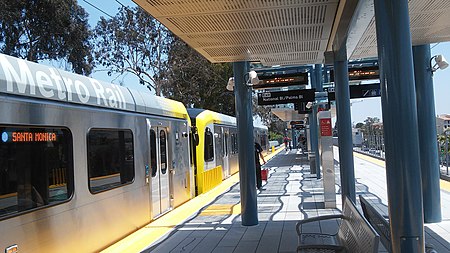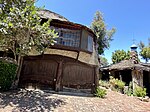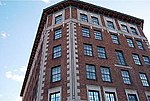Palms station
2016 establishments in CaliforniaAll pages needing factual verificationE Line (Los Angeles Metro) stationsPacific Electric stationsPalms, Los Angeles ... and 5 more
Railway stations in Los AngelesRailway stations in the United States opened in 2016Use mdy dates from June 2023Westside (Los Angeles County)Wikipedia page with obscure subdivision

Palms station is an elevated light rail station on the E Line of the Los Angeles Metro Rail system. The station is located over the intersection of National Boulevard and Palms Boulevard in the Palms neighborhood of Los Angeles, after which the station is named.
Excerpt from the Wikipedia article Palms station (License: CC BY-SA 3.0, Authors, Images).Palms station
Exposition Boulevard, Los Angeles Palms
Geographical coordinates (GPS) Address Nearby Places Show on map
Geographical coordinates (GPS)
| Latitude | Longitude |
|---|---|
| N 34.0291 ° | E -118.4036 ° |
Address
Exposition Boulevard 9998
90034 Los Angeles, Palms
California, United States
Open on Google Maps









